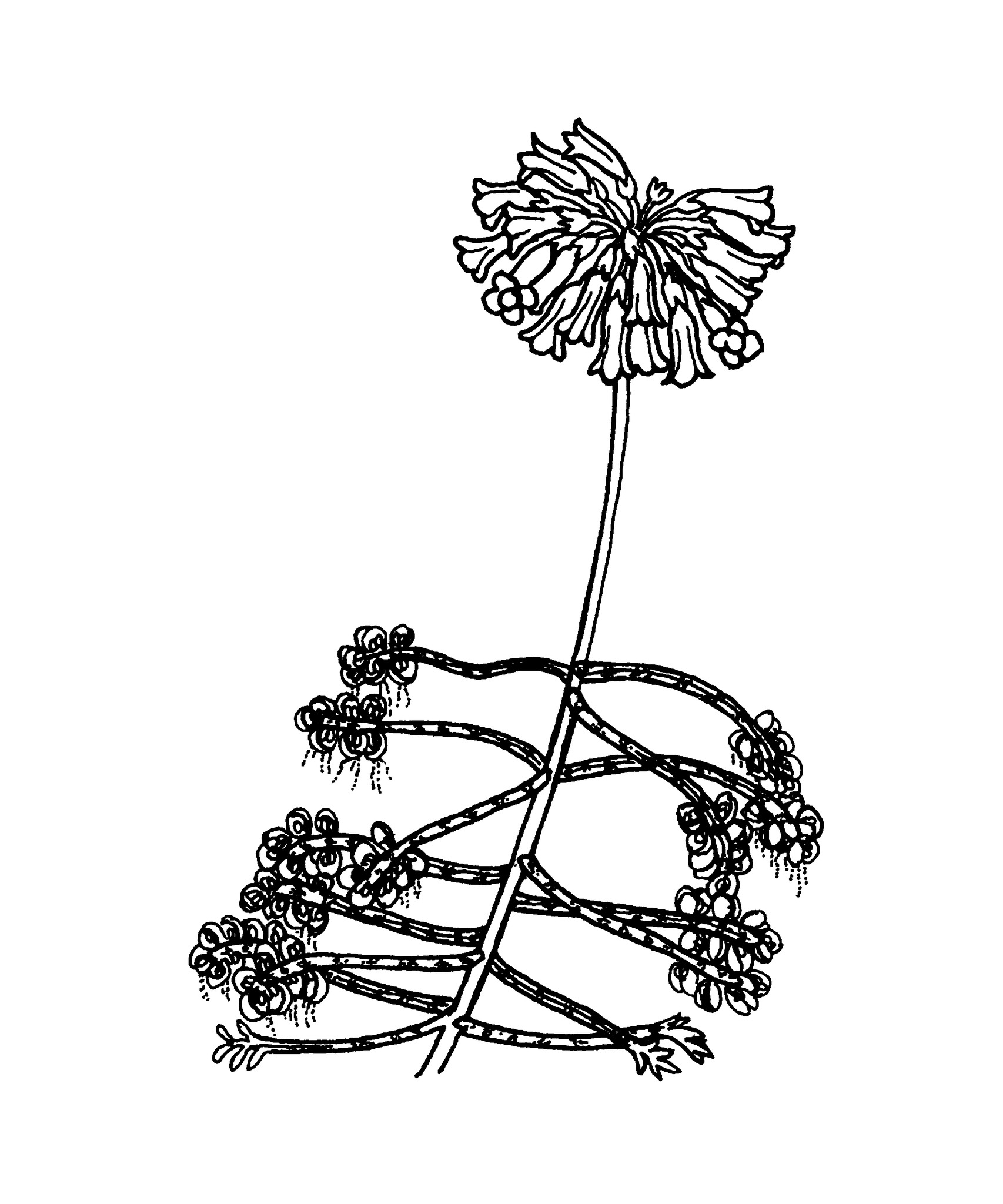
Greek bryo — to sprout, phyllon — leaf, referring to the vegetative buds that appear on the leaf edges.
Mostly small shrubs with erect, rather woody branches. Leaves opposite, fleshy, persistent, producing small plantlets (pseudobulbils) on the margin, not deciduous. Flower clusters branched, the bracts on the flower stem short and different from the leaves. Flowers pendulous, 4-parted. Sepals united for at least half the length. Petals fused into a long tube, the anthers usually protruding. Carpels free.
Often included in Kalanchoe, Bryophyllum differs in having pendulous flowers and stamen filaments often fused to the corolla tube in the lower third, not at or above the middle. The split from Kalanchoe is still being debated.
About 35 species from Madagascar, where it is endemic (but naturalised elsewhere).
Stem cuttings, leaves, plantlets from leaves or inflorescences, and seed.
Flowers 4-parted, pendulous, petals fused, stamens joined to the corolla tube towards the base.
Forster (1985, 1992g (key to 7 naturalised species)), Boiteau & Allorge-Boiteau (1995), Rauh (1995).
Source: (2002). Crassulaceae. In: . Horticultural Flora of South-eastern Australia. Volume 3. Flowering plants. Dicotyledons. Part 2. The identification of garden and cultivated plants. University of New South Wales Press.
